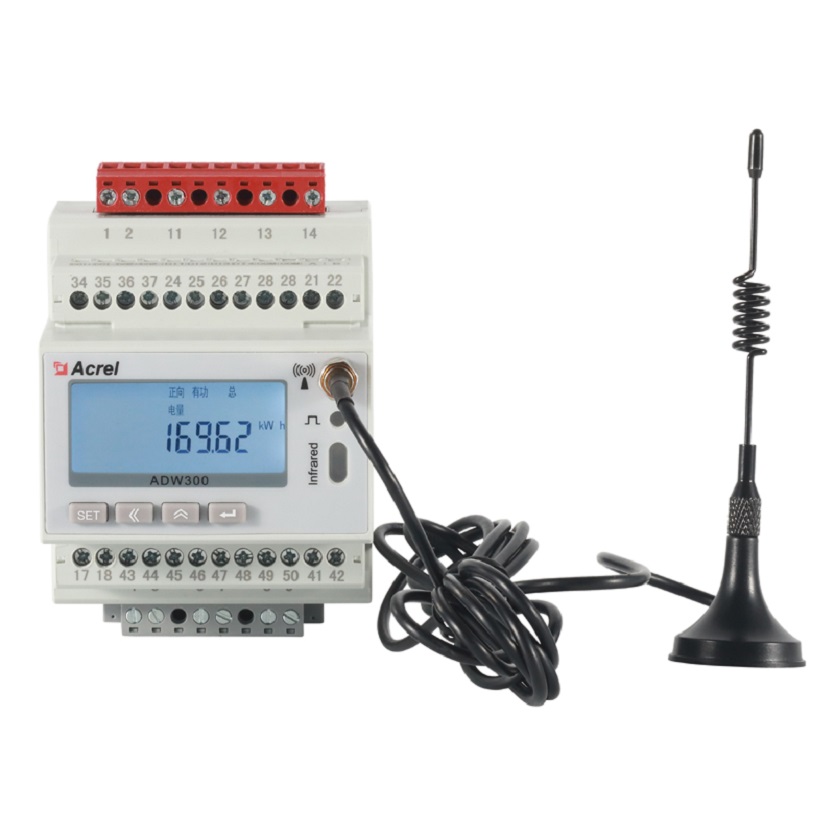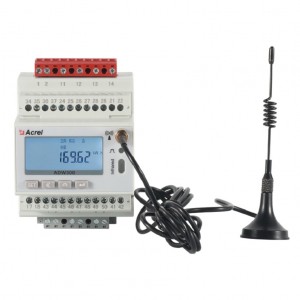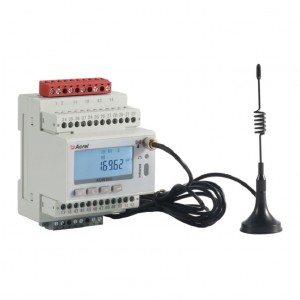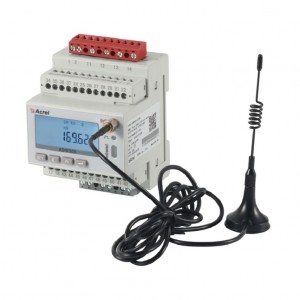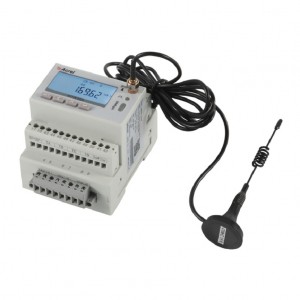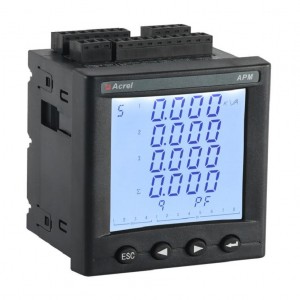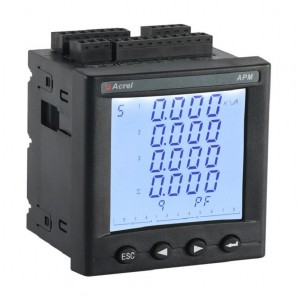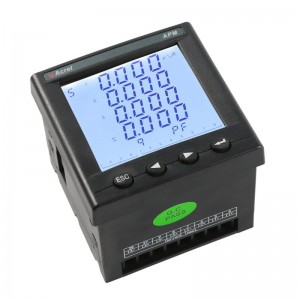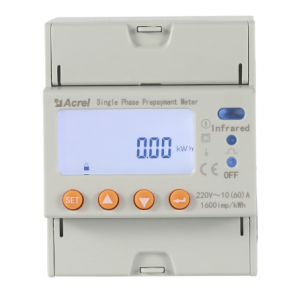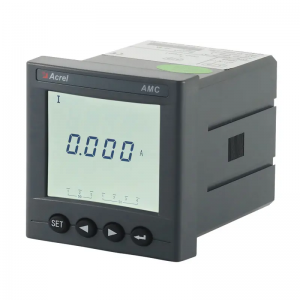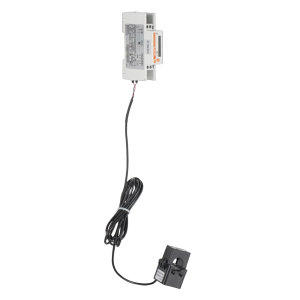Wireless Power Meter, ADW300
Wireless Power Meter, ADW300
ADW300 wireless power meter is a three-phase iot electricity meter(multi function meter with rs485) designed to measure active power consumption in low voltage systems, featuring small size, high accuracy and a wealth of functions. It supports RS485 interface and wireless communication (Lora, 2G, NB, 4G). Adding the new current sampling mode using external transformer.
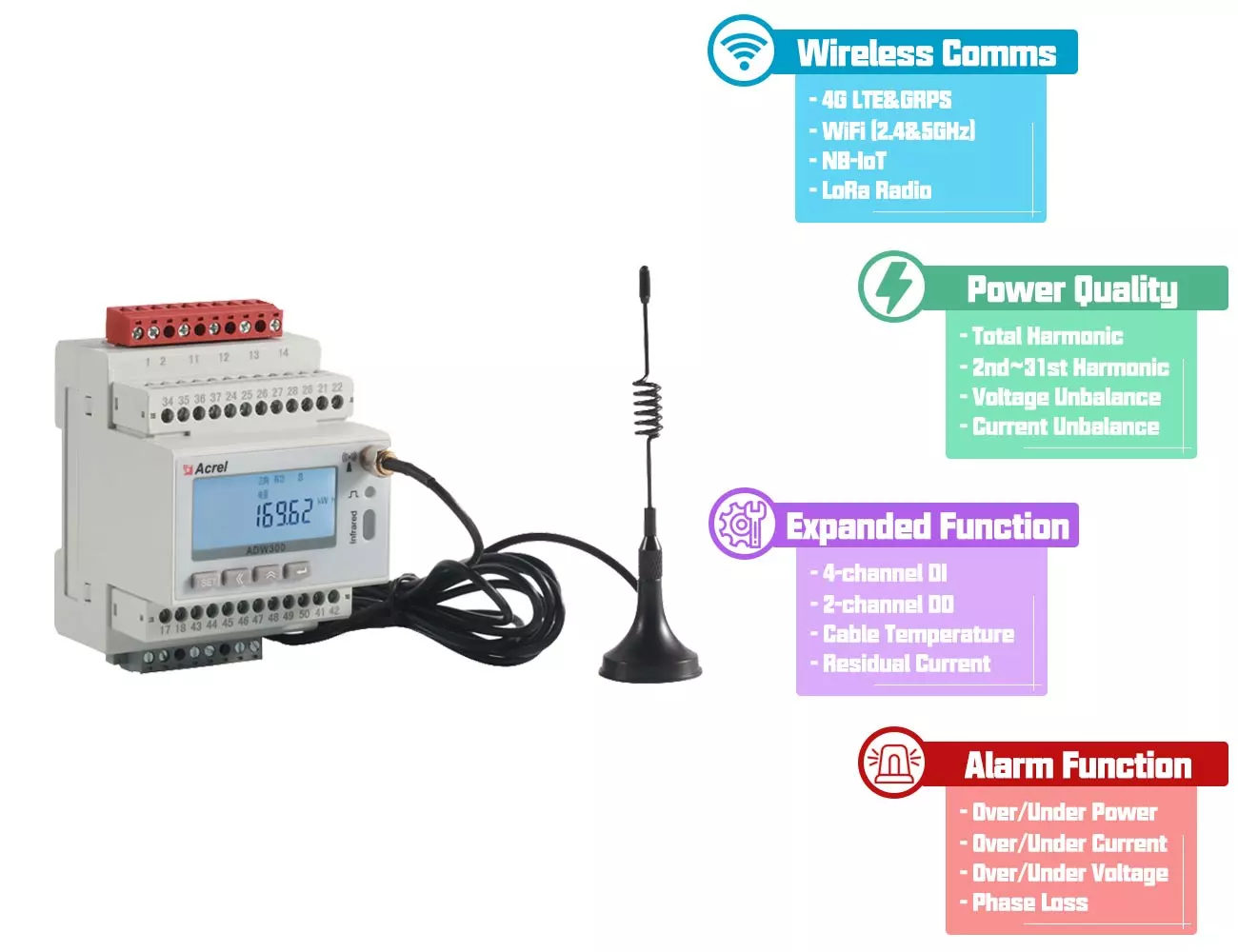
Power Quality Analysis
● Total Harmonic
● 2nd~31st Harmonic
● Voltage Unbalance
● Current Unbalance
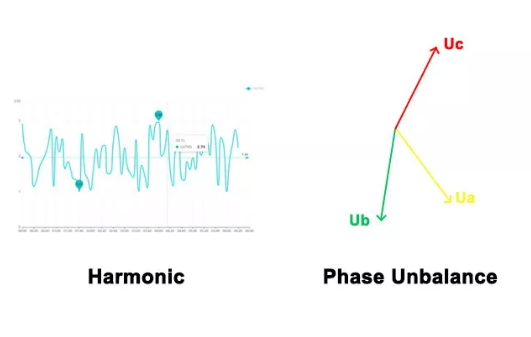
Multiple Communication Methods
● 4G LTE
● NB-IoT
● WiFi (2.4GHz&5GHz)
● LoRa
● RS485 (MODBUS-RTU)
● Paired with IoT Energy Monitoring System
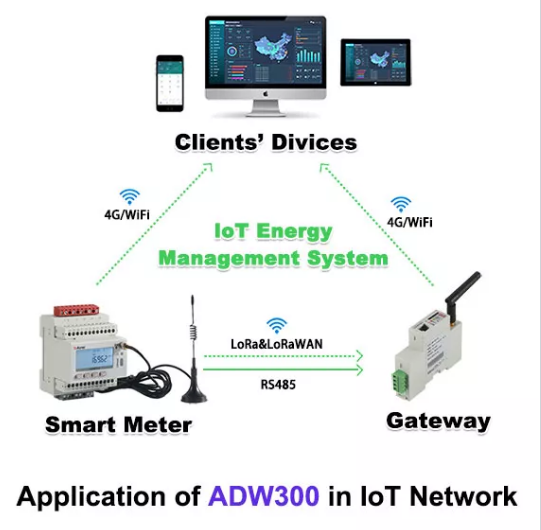
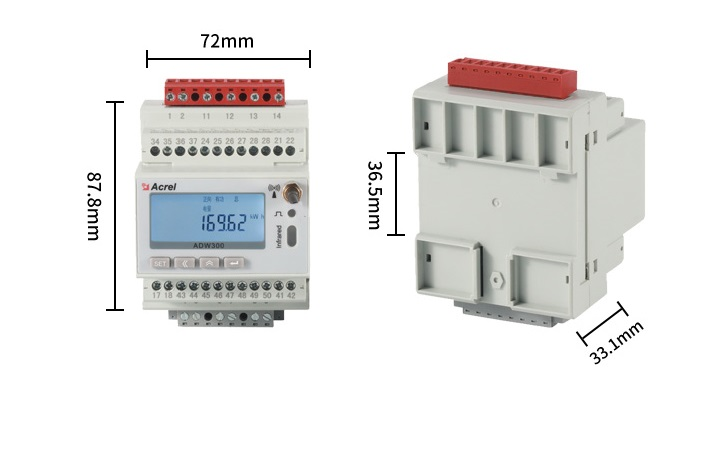
ADW300 Matched CTs Specification

ADW300-HJ Matched CTs Specification
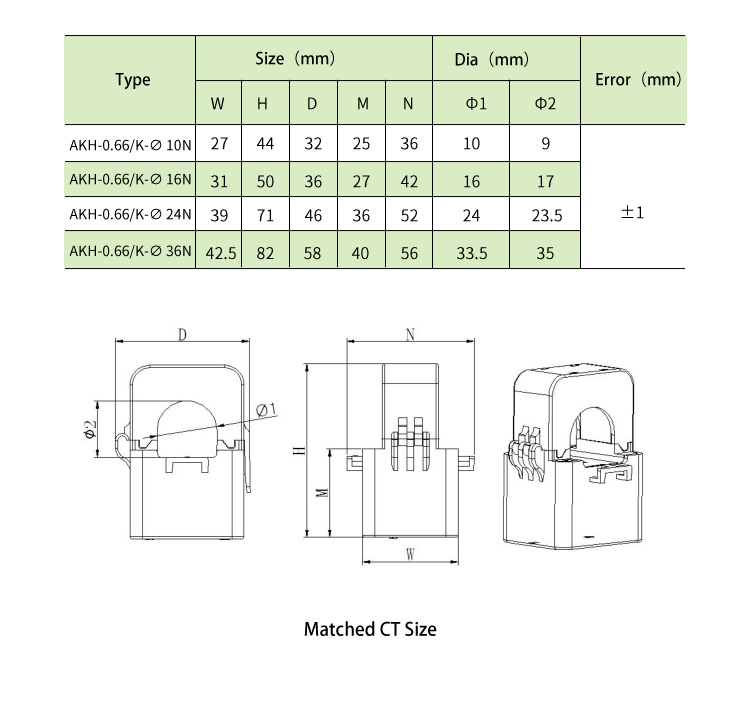
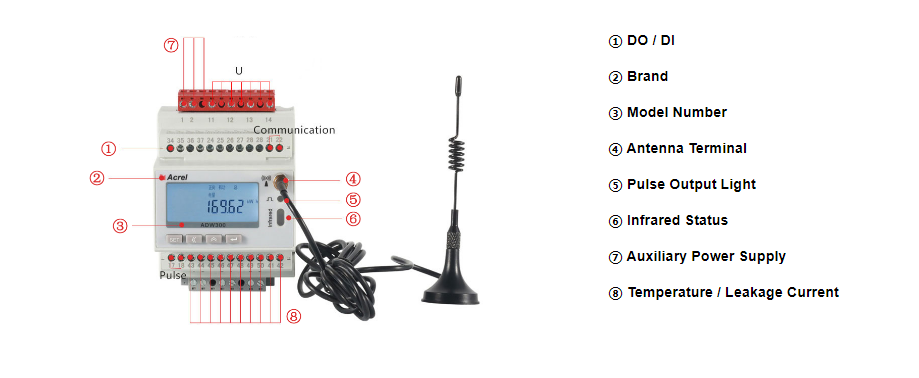
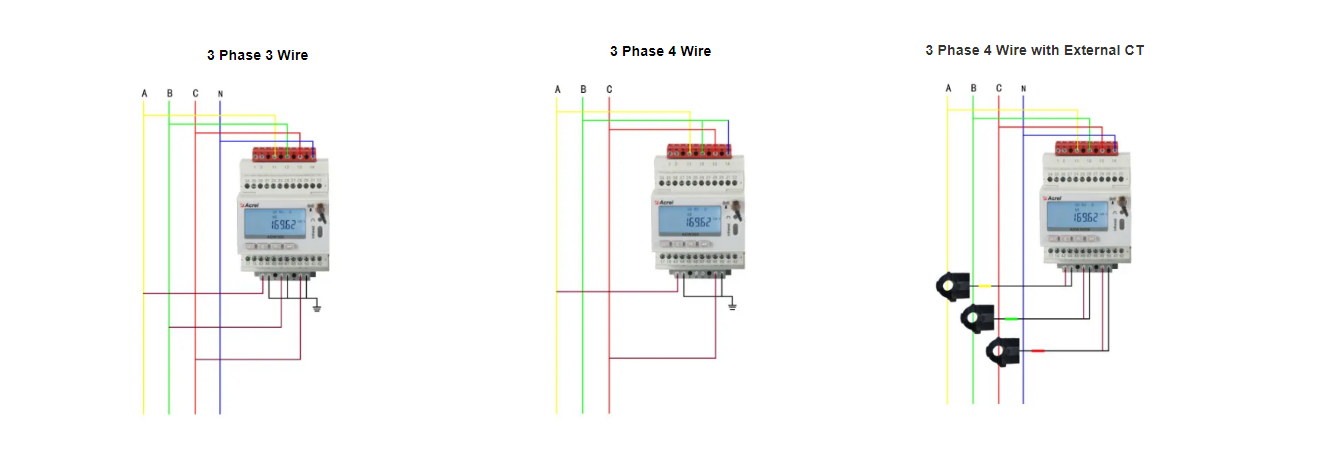

Step ①: Correctly install&wire meters
1. 35mm DIN-rail installation
2. 3-phase 4-wire or 3-phase 3-wire methods
3. Voltage signal input via direct connect or PTs
4. Current signal input via CTs or Rogowski Coils
5. Power supplied by 85~265Vac L-N power source
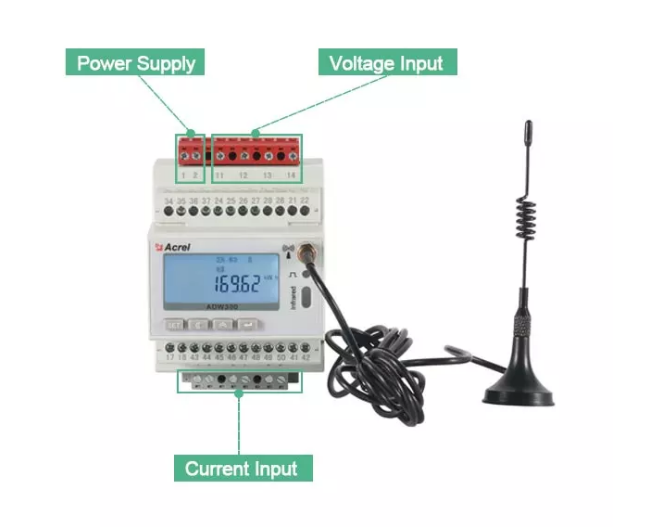
Step ②: Download&Register IoT APP
1. Introduction of IoT Energy Monitoring Solution (IoT EMS)
2. Introduction of IoT EMS APP (for mobile users)
3. Introduction of IoT EMS WEB (for PC users)
4. Download of IoT EMS APP
5. Register your account with 3-month Free Trial
6. Or contact us to get Test Account

Step ③: Add Meters to your Account
1. Meters are recognized by unique SN code
2. Scan QR code to add meter to your account
3. Edit CT&PT ratio according to paired CT&PT
4. If voltage input via direct connect, PT ratio set to 1 (Actual Power System Voltage = Voltage Signal Input of Meter)
5. If current input via 250A/5A CTs for example, CT ratio set to 50 (250÷5=50)
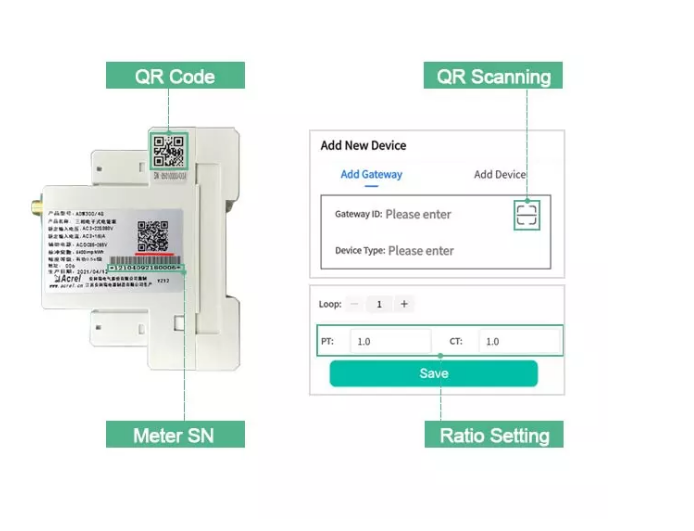
Step ④: Start your 3-month Free Trial
1. After 3 months, host service&buy-out service will be available for account renewal
2. Contact us for more information about system charge item&meter quotation
3. Before we send you the quotation, we will set a solution acoording to your request
4. Provide full technical support for installing meters and connecting meters to our system

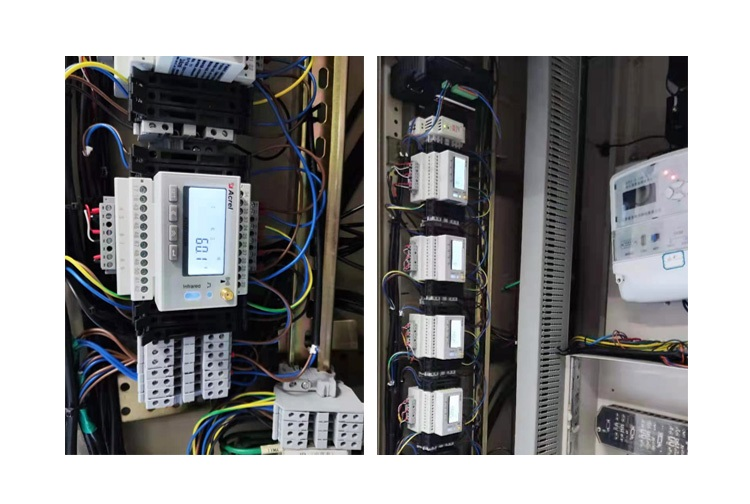
Functional Characteristics
Chart 1 Functions of ADW300
| Functions | Description | ||
| Display mode | LCD | ||
| Energy metering | Active kWh (positive and negative),quadrant reactive | ||
| power energy | |||
| Electrical measurement | U、I、 P、Q、S、PF、F | ||
| Harmonic function | THDv、Harmonic on 2nd-31st | ||
| Pulse output | Active pulse output | ||
| Three-phase unbalance degree | Voltage unbalance,current unbalance | ||
| Temperature measurement | Temperature of A/B/C/N(Alternate configuration:T) | ||
| DI/DO | 4DI,2DO(Alternate configuration:K) | ||
| Aftercurrent | One-way aftercurrent(Alternate configuration:L) | ||
| LED display | Pulse LED display | ||
| External current transformer | External open type current transformer (Alternate configuration:W) |
||
| Electrical parameter | Undervoltage, undercurrent, overcurrent, underload, etc |
||
| Communication | Infrared communication | ||
| RS485(Alternate configuration:C) | |||
| Wireless transmission on 470MHz (Alternate configuration:LR) |
|||
| WIFI(Alternate configuration:WF) | |||
| NB-IOT(Alternate configuration:NB) | |||
| 4G(Alternate configuration:4G) |
Technical parameter
Chart 2 Electrical performance of ADW300
| Voltage input | Rated voltage | 3×57.7/100V,3×220/380V,3×380/660V,3×100V, 3×380V,3×660V |
| Referencefrequency | 50Hz | |
| Consumption | <0.5VA (Each phase) | |
| Current input | Input current | 3×1(6)A ;3×1(6)A(ADW300W), 3×20(100)A(ADW300W) |
| Start current | 1‰ Ib (Class 0.5S),4‰ Ib (Class 1) | |
| Consumption | <1VA (Each phase) | |
| Auxiliary power | Power Supply | AC 85~265V |
| Power consumption | <2W | |
| Measurement | Standard | IEC 62053-22:2003,IEC 62053-21:2003 |
| performance | Active energyaccuracy | Class 0.5S(ADW300),Class 1(ADW300W) |
| Temperatureaccuracy | ±2℃ | |
| Pulse | Width of pulse | 80±20ms |
| Pulse constant | 6400imp/kWh , 400imp/kWh | |
| Communication | Wireless | Transmission on 470MHz and maximum distance in open space is 1km;2G;NB;4G |
| Infraredcommunication | The constant baud rate is 1200 | |
| Interface | RS485(A、B) | |
| Connection mode | Shielded twisted pair conductors | |
| Protocol | MODBUS-RTU |


